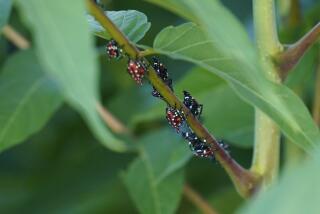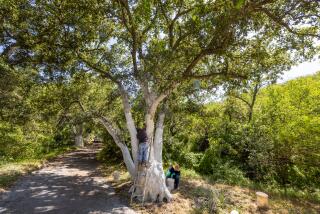California gall wasp
- Share via
[ ANDRICUS QUERCUSCALIFORNICUS ]
Although “oak apples” look like round or potato-shaped fruit, these tan orbs are actually the homes of tiny wasps barely larger than grape seeds. These tiny insects lay their eggs in valley, blue and Oregon oaks in coastal and low-lying areas of California. Immediately after hatching, larval gall wasps secrete juices that swell oak tissue into large, hollow balls that protect the young insects from predators as they feed and grow. In October, adult wasps emerge and live just long enough to lay a batch of eggs. These lay dormant over the winter, hatch in the spring and then trigger the host to produce new galls.
NATURAL HISTORY
Though hollow galls appear deceptively barren, they harbor a dozen or so gall wasp larvae plus a zoo of parasites, hyperparasites, and inquilines. The latter group of insects specializes in eating the plant tissues found in galls.
KEY CHARACTERISTICS
Although the reddish-brown adult wasps are so small they’re scarcely noticeable, the 6-inch-wide galls turn a prominent white, then tan as summer progresses. By winter, the galls turn blackish.


